Switch stand support tie arrangements
12


















12
Switch stand support tie arrangements
|
I've been doing some research on the tie arrangements used to support switch stands. Most photos don't offer enough of a bird's-eye-view to be clear, so I thought I'd start a thread where folks could post pictures that do.
Idaho Springs harp. Double tie under switch stand, no straps visible: 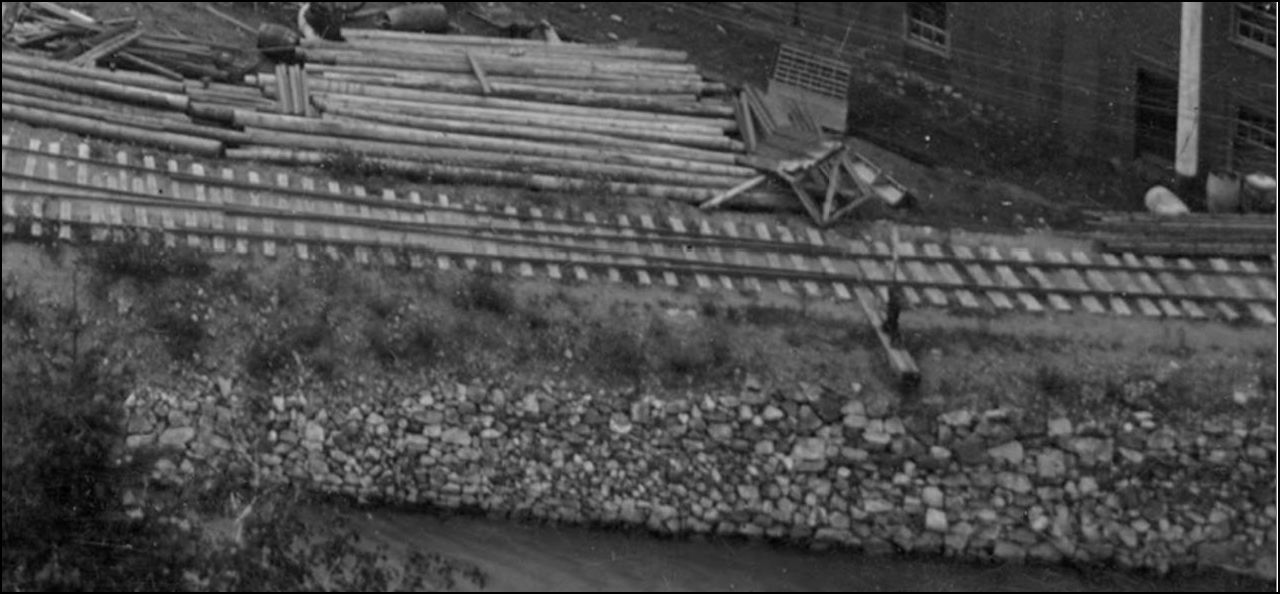 http://digital.denverlibrary.org/cdm/fullbrowser/collection/p15330coll21/id/10332/rv/singleitem Jefferson harp. Double tie under switch stand with metal straps (rail bars?):  Dickey harp. Double tie under switch stand, no straps visible: 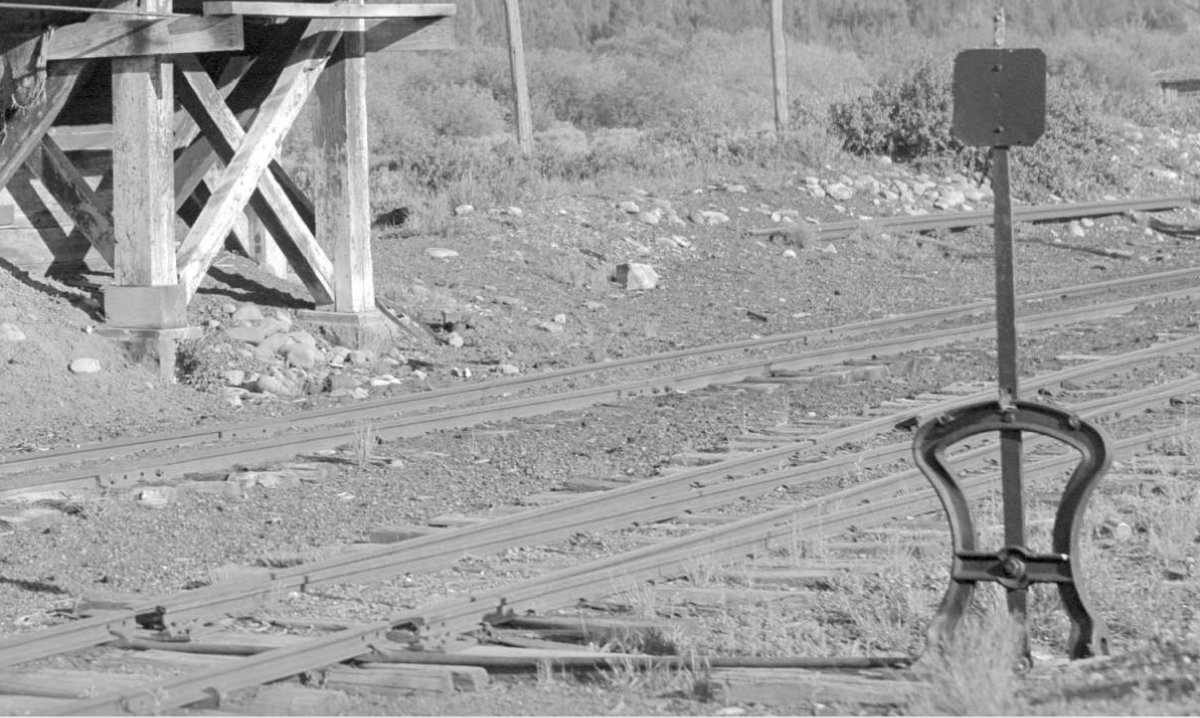 http://digital.denverlibrary.org/cdm/singleitem/collection/p15330coll22/id/44057/rec/10 Sapinero (D&RGW) harp. Double tie under switch stand with at least one metal strap:  http://digital.denverlibrary.org/cdm/singleitem/collection/p15330coll22/id/79841/rec/8 Rico (RGS) harp. Double tie under switch stand with metal straps:  http://digital.denverlibrary.org/cdm/singleitem/collection/p15330coll22/id/44057/rec/10 Como Elliot. Single tie:  Silica Elliot. Single tie: 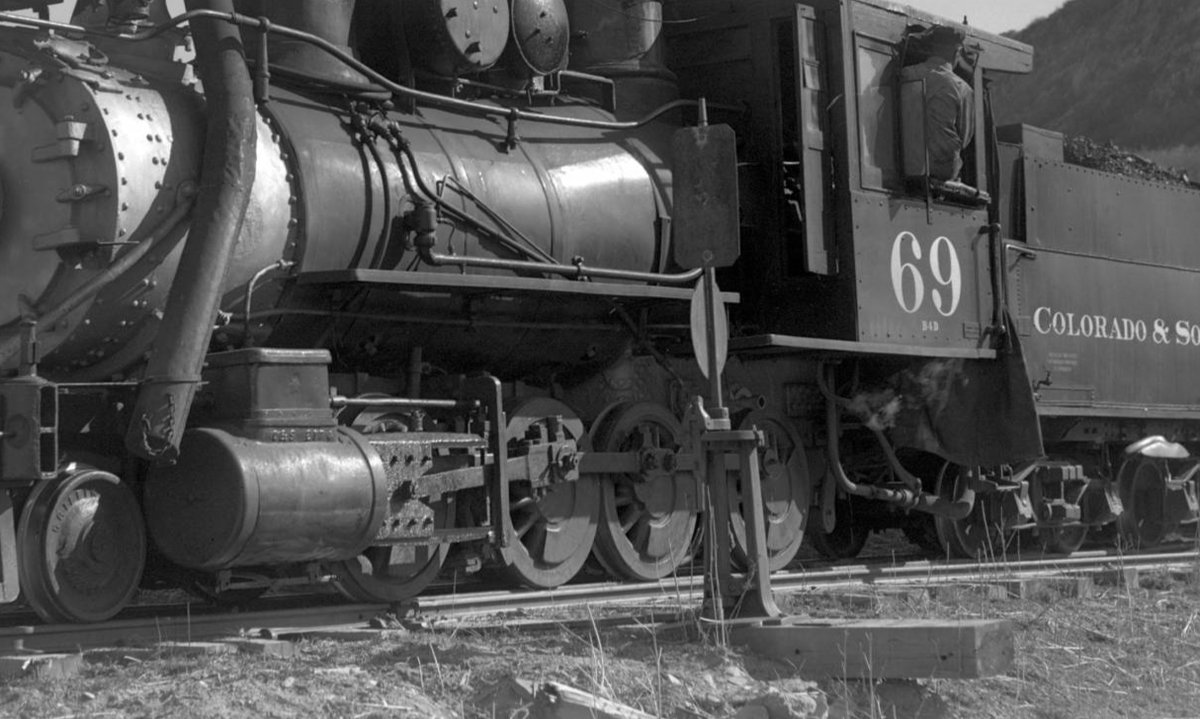 http://digital.denverlibrary.org/cdm/singleitem/collection/p15330coll22/id/42287/rec/9 Sargent (D&RGW) Elliot. Pair of standard-spaced ties: 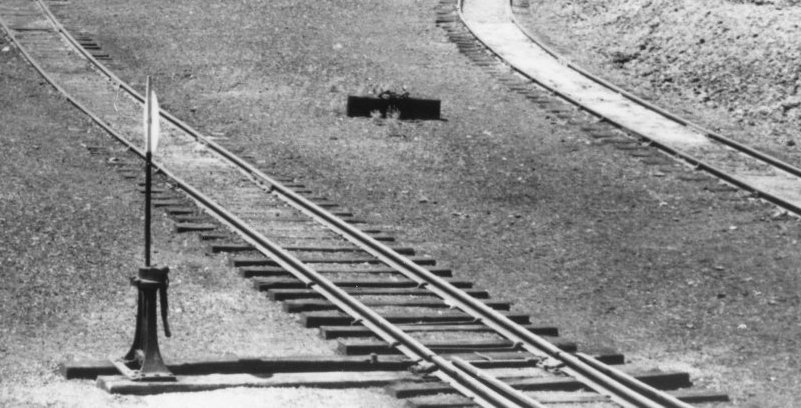 And just for kicks, a high star stand on a modern, standard-gauge split-point switch in Leadville. Pair of standard-spaced ties:  Cheers, Jeff. |
Re: Switch stand support tie arrangements
|
Jeff, great idea!
Some types of Sw-Stands straddled the pair of long Ties, others were designed to fit on one long crosstie. Oldest photos seem to show one very wide Tie (Handhewn Era) that was later supplanted by standard width sawn lumber. The Idaho Springs example appears to be two slightly narrower bridgeplanks spiked together. The Jefferson and Dickey examples are actually a Short Tie rather than two long. The doubling of these gave better stability to resist the twisting or flexing given by the "mechanical lever" vertical forces acted upon the timber of considerable length. Some as you have remarked upon, are strapped together by re-purposed rail joinerbars, others that have no visible bars probably were bridgespiked (aka boatspike) together. If a second short Tie is not attached securely to the main long Tie it will work outwards and become inefficient support. This added width also gave the switchman a better standing surface area whilst operating balky (most times) sw-stands. I often wonder, given the location visible in photos of the Jointbars, were they spiked down in a postion that assisted the footing of the Switchman? Note the positioning of the rearmost Foot in the Sapinero picture. Rick would be able to answer that as we on NZR had no examples of this practice at least in my 600 mile running District.
UpSideDownC
in New Zealand |
Re: Switch stand support tie arrangements
|
Indeed, the Sapinero picture certainly makes it look that way.
A couple more to add to the collection: A pair of Elliots on Boreas Pass (front one, at least, is on a single tie):  http://digital.denverlibrary.org/cdm/singleitem/collection/p15330coll22/id/43639/rec/412 And there's this one we were looking at earlier, which is (so far) the only harp on a single tie (note the way his boot is angled):  http://digital.denverlibrary.org/cdm/singleitem/collection/p15330coll22/id/66245/rec/24 Cheers, Jeff. |
Re: Switch stand support tie arrangements
|
In reply to this post by Jeff Young
Wow, Jeff,
The overhead view of the turnout at I.S. is fascinating. It's a very long turnout, with very long wing rails at the frog and very, very long guard rails. It looks to me like the switch stand is supported by 2 ties, tuned on edge, rather than flat. Jim
Jim Courtney
Poulsbo, WA |
Re: Switch stand support tie arrangements
|
> It's a very long turnout…
I think part of it is that we’re used to looking at them from ground level where everything is fore-shortened. Counting ties, the I.S. switch appears to be a #10, which is longer than the standard #8-1//2, but not by a huge amount. The wing rails are normal for a #10. Even given all that, the extra-long guard rails are still odd…. Cheers, Jeff. |
Re: Switch stand support tie arrangements
|
Jeff, The longer checkrails were normal practice for the early years, just enlarge the Dickey Tank picture to see what I mean. I guess if you're exposed to modern practices reproduced by model track manufacturers then that is what you expect to be normal. I too have had to modify my thinking over the years. While you're looking at Dickey notice how in this picture and (alot of others), that the C&S weren't too fussy about putting a jointbolt in every jointbar hole !
UpSideDownC
in New Zealand |
Re: Switch stand support tie arrangements
|
In reply to this post by Jeff Young
It also looks like the turnout was added to the original track alignment later, as an afterthought. There are not any long switch ties, lots of near standard length ties, overlaping from before the frog onward.
Jim
Jim Courtney
Poulsbo, WA |
Re: Switch stand support tie arrangements
|
Very interesting.
I looked through Digerness last night, and found two other switches with long guard rails, both from the end of the 19th C. Doing a bit more digging, it appears that at least some of them survived well into the 20th C. Here's a switch at Jefferson. The photo is at eye-level, resulting in fore-shortening, but note that the guard rail continues 5 ties past the end of the wing rail. Also note that this is one end of the wye, coming off the upgraded-rail main-line (not on the still-original-rail siding where the switch with the harp stand which appears earlier in this thread is).  The other end of the wye, in front of the water tank, is much harder to make out. But they look "short" there: 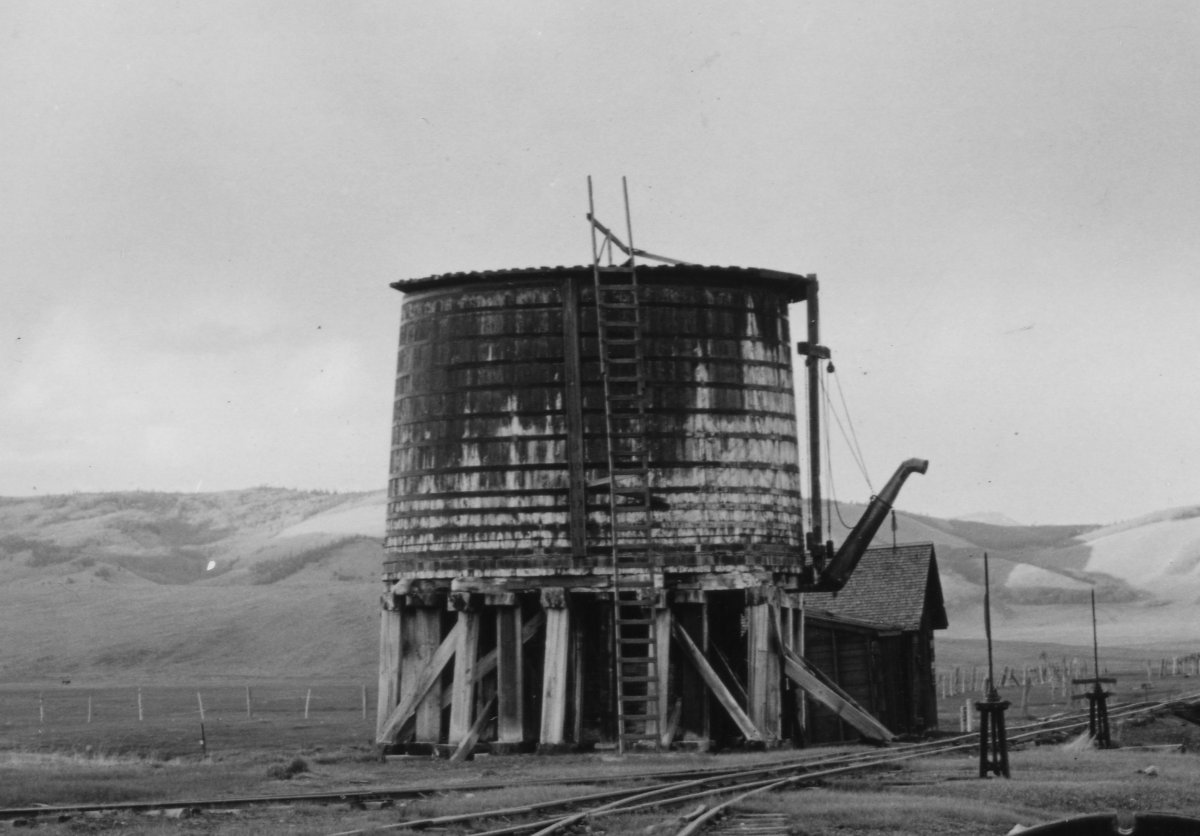
|
Re: Switch stand support tie arrangements
|
Standard mounting practice for an Elliot (single tie), but it's still an interesting shot:
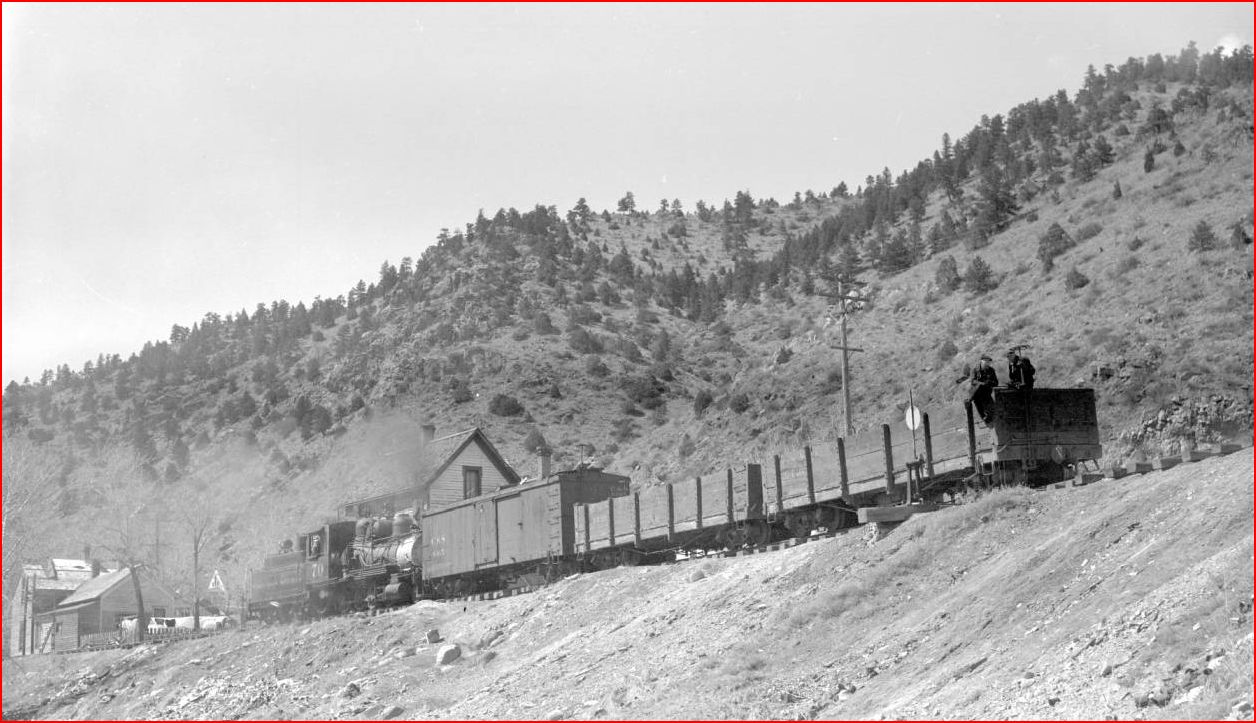 http://digital.denverlibrary.org/cdm/singleitem/collection/p15330coll22/id/42728/rec/4 |
Re: Switch stand support tie arrangements
|
In reply to this post by Jim Courtney
Jim,
I am thinking that using regular ties interweaved was the standard way the West Side Lumber Co. did their turnouts. I would have to check some books to be sure, but that is what I recall off the top of my head. Certainly a way to add a turnout in without having to take the track out of service very long I guess. Maybe more common than we think, especially in earlier construction. Best, Todd Ferguson Harrisburg, NC |
Re: Switch stand support tie arrangements
|
This one just came up in another thread; a fully elevated harp on the Gilpin:
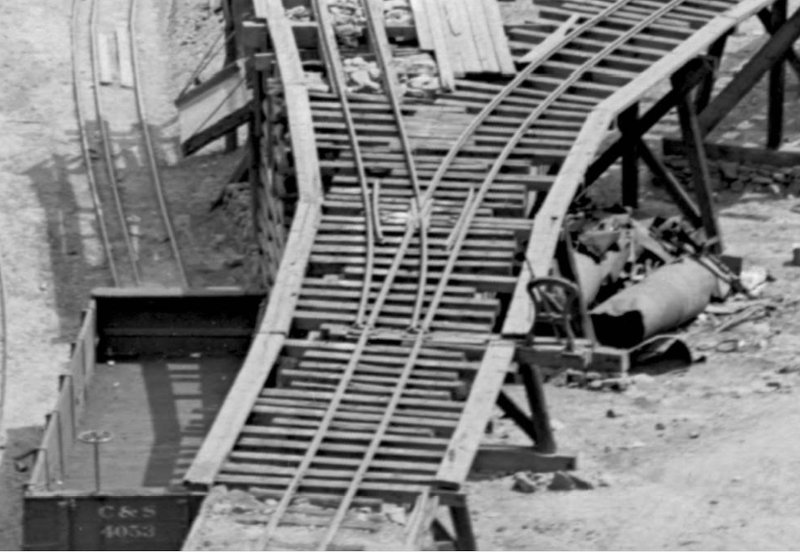 http://cdm16079.contentdm.oclc.org/cdm/singleitem/collection/p15330coll22/id/70884/rec/22 |
Re: Switch stand support tie arrangements
|
Fabricated stand bolted to a single tie:
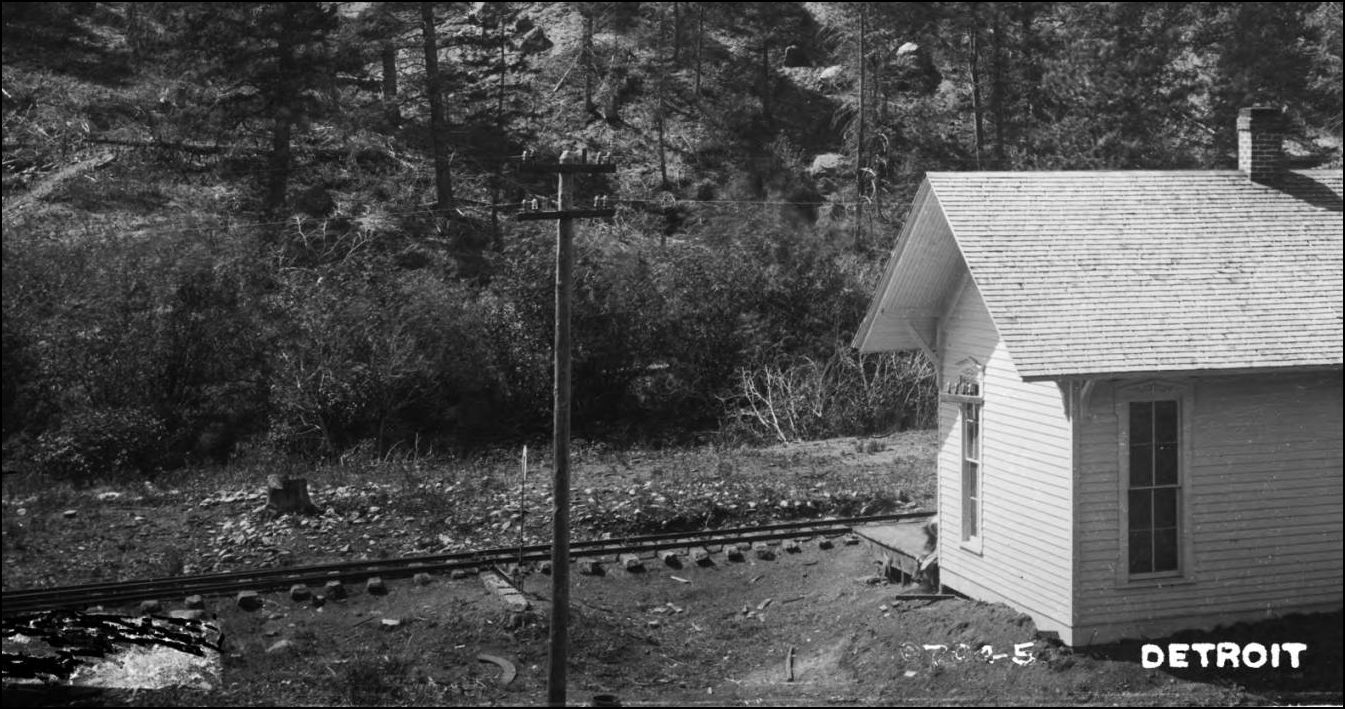 http://digital.denverlibrary.org/cdm/fullbrowser/collection/p15330coll21/id/7116/rv/singleitem/rec/3 (Credit to Chris for finding this one.) Cheers, Jeff. |
Re: Switch stand support tie arrangements
|
Jeff, Very cool find...and arrangement. Best, Todd Sent from my iPad
|
|
Was there not a standard layout, no manual?
I have a personal 1:1 interest. |
Re: Switch stand support tie arrangements
|
Some switch stands were designed for mounting on a single tie and most more modern designs were designed to span two ties. It is best if you can find photographic evidence of the switch and stand used on it in your era. Or at least the type of stand and how it was typically installed. Best, Todd Ferguson Harrisburg, NC Sent from my iPad
|
Re: Switch stand support tie arrangements
|
In reply to this post by ComoDepot
Go to the Files section on the main C&Sn3 blog.
Under "C&S Standard Trackwork" there are c1910 engineering drawings of C&S narrow gauge turnouts.
Jim Courtney
Poulsbo, WA |
|
1910 would be a bit late, I assumed when they laid the track there would have been somebody making sure it was done ti standard, I can see that track gangs later might have just done what was needed.
|
Re: Switch stand support tie arrangements
|
In reply to this post by Jim Courtney
Link to image of the Fabricated Harpstand as on the SPNG(ex C&C). This particular stand bolted vertically to the side of the Tie and diagonally braced to the topside of the Tie necessitating only one Tie.
http://ngdiscussion.net/phorum/read.php?1,258037,258165#msg-258165
UpSideDownC
in New Zealand |
Re: Switch stand support tie arrangements
|
Interesting photo Chris. I believe the broad gauge Southern Pacific used single single tie switch stand arrangements widely too. May even have some in place on their former trackage to this day. Best, Todd Ferguson Harrisburg, NC Sent from my iPad
|
Re: Switch stand support tie arrangements
|
In reply to this post by Chris Walker
I'm going to suggest that all of the stubs switches have gage rods or gage bars. The lighter the rail the more necessary they are. Rail flexes dramatically under the weight of equipment. A low camera angle and the high "ballast" hides them from the cameras. Look for where the gage rod or bar wraps around the base of the rail. There appear to be various types, I suspect depending on supplier. Straps above the ties, straps below the ties and the other a vertical bar which is mostly below the base of the rail. In the Dickey photo for instance I can see at least one gage bar. JP
|
«
Return to C&Sng Discussion Forum
|
1 view|%1 views
| Free forum by Nabble | Edit this page |


